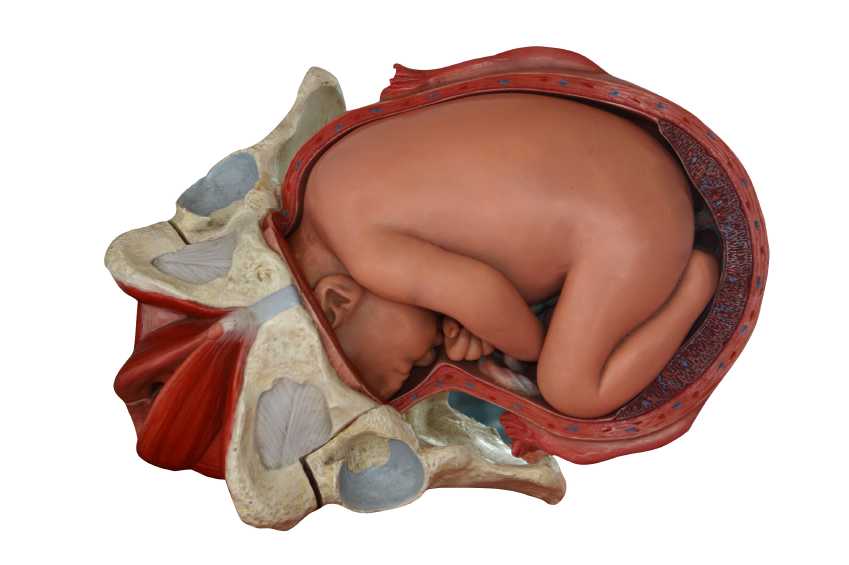How the concepts of stigma and taboos affect bowel function is the focus of a recent article by Chelvanayagam, a lecturer in mental health in England. The author establishes that previously taboo subjects are becoming less hidden in the media, such as sexual function or urinary incontinence, but that in the UK, bowel function is still considered taboo. When people are not given language and social permission to discuss health concerns, conditions go underreported or unrecognized and under treated.
The author points out that patients with bowel dysfunction such as irritable bowel disease, fecal incontinence, and stomas feel stigmatized and are hesitant to discuss concerns with heath care providers or loved ones. The social implications of bowel disorders can lead to socially isolating behaviors including difficulty going out to eat, participating in physical activities, or taking sick leave from work.
Because pelvic rehabilitation providers discuss intimate issues including bowel function with patients, communication skills are very important in order to allow the patient to feel comfortable about the topic. Both verbal and non-verbal techniques will be observed and responded to by the patient. Various stigma-reducing strategies are described in the article. At the interpersonal level, cognitive-behavioral and empowerment strategies are recommended, and at the community level, education and advocacy are listed. Each of these strategies are ones that the pelvic rehabilitation provider is capable of providing.
If you have been wanting to learn more about bowel dysfunction and pelvic rehabilitation, the Institute added to our offeringsa bowel course that is next offered in June in Minneapolis, and November in Los Angeles area.

This post was written by H&W instructor Allison Ariail, PT, DPT, CLT-LANA, BCB-PMD. Allison will be instructing the Care of the Postpartum Patient course in Houston in June.
As Mother’s day weekend approaches, I take time to think about the dramatic changes in life that occur with the birth of a baby! No one is quite prepared for how much their life will change with the birth of their child, especially their first child! There are numerous changes that occur in a woman’s life during the pregnancy and into the postpartum time, both emotionally and physically. Any woman who has had a baby knows our bodies do not revert back to the exact body we had prior to pregnancy. New moms may be left with changes in their body that can greatly affect their function. Physical therapy in the postpartum time can greatly improve a woman’s well-being and function. We can treat a woman for back pain, diastasis rectus separations, incontinence, thoracic outlet syndrome, nerve damage that occurred during delivery, and many more issues a woman may present with. We also are a listening ear for the new mom going through many changes and hormonal upheaval. It is important to stay open and listen in a non-judgmental way. New moms are inundated with unsolicited advice in a way that no other patient population is. Having a safe place to come and get treated physically can help her emotionally as well.
During pregnancy and the postpartum time many habits are formed that if not changed can influence and shape how a woman lives the rest of her life. For example, night time voiding is common for pregnant women. If a woman continues to void every time she gets up with the baby in the middle of the night once she delivers, she may continue or even worsen her habit, thus creating an issue that will greatly affect her overall sleep health and well-being for the rest of her life. Having an objective person educate a woman about some of these habits can be very enlightening for an individual!
Receiving therapy in the postpartum time can influence a woman’s overall health in the immediate future as well as down the road. There are special things to consider when treating a postpartum woman and a women’s health therapist is the best person to treat her.
You can learn about special topics that affect a postpartum woman in Care of the Postpartum Patient course. The next time this course is being offered is June7-8 in Houston, Texas. So as mother’s day comes upon us, let’s celebrate the amazing journey we and other moms take in becoming a mom. Let us embrace the remarkable changes that occur physically and emotionally and thank our own mothers, as well as ourselves, for being willing to undergo these changes!
A recent MedScape articlewarns that "no amount" of alcohol is safe in terms of avoiding cancer risk. Although the mechanisms between alcohol and cancer are not well understood, according to the article, alcoholic beverages can contain at least 15 ingredients that are carcinogenic, such as acetaldehyde, acrylamide, aflatoxins, arsenic, benzene, cadmium, ethanol, ethyl carbamate, formaldehyde, and lead. Potential causative mechanisms for alcohol-related cancer include that alcohol interferes with folate metabolism, and that in relation to breast cancer, alcohol can increase estrogen levels and stimulate mammary cell growth. Hard liquor can affect the oral cavity, the esophagus (especially hard liquor and the colon, rectum, and liver.
According to the author, patients who have health issues related to cancer should be warned to stop using alcohol and should be referred to cessation programs. Pregnant women and youth should be counseled not to drink at all. Alcohol consumption is recommended to be limited to 1 drink per day in women and 1.5 drinks per day for men. Alcohol screening is recommended as a "routine" part of an office visit. Whether the screening is completed on a written or electronic intake, or as part of the verbal history, patients should be asked to report the number of drinks per day, week, or month. Validated screening tools and referral resources that are helpful for patients are listed in this article written by Dr. Friedan.
Smoking in combination with alcohol can worsen the risk for detrimental health effects, especially in the oral cavity, the pharynx, larynx, and esophagus. Physical therapist intervention as a part of smoking cessation education can be an important and effective part of health management. Bladder health is also negatively impacted by smoking, as described in an earlier blog post. As physical therapists and other pelvic rehab providers become more involved in wellness education and integrate smoking and alcohol consumption into their clinical practice, increased knowledge about cancer-related lifestyle issues can be helpful. The Institute offers our Oncology series including a Female and Male focused course on cancer and the pelvic floor. The next opportunity to take Oncology and the Pelvic Floor: Female Reproductive and Gynecologic Cancers is June in Orlando. If you are interested in hosting one of our oncology courses, contact the Institute!
For some patients presenting to the pelvic rehabilitation provider, vaginal yeast infections related to Candida are an ongoing issue, a prior causative factor in pelvic muscle tension, or a potential perpetuating issue in a patient's pelvic dysfunction. A recent research article discussing candida as a chronic disease aims to propose a definition of and diagnostic criteria for women who have chronic vulvovaginal candidiasis (CVVC). This was a prospective study involving 50 women presumed to have CVVC and 42 controls. Women with CVVC were found to have the following characteristics when compared to the control group: history of a positive vaginal Candida swab, discharge, dyspareunia, soreness, swelling, cyclicity, and worsening of symptoms with antibiotics. The authors proposed that CVVC diagnosis can be made confidently utilizing 5 or more of the following: soreness, dyspareunia, positive vaginal swab (current or past prior response to antifungal medication, exacerbation with antibiotics, cyclicity, swelling, and discharge.
The authors stated reasons for wanting to categorizing and address this issue is that they had frequently observed patients with vulvovaginal candidiasis who did not present with acute or recurrent episodes, but rather with a continuous issue. The symptoms in this population tend to improve during menstruation and ease with antifungal therapy. An interesting observation made in this article is that vaginal swab test may be negative even in the presence of other symptoms. There are several proposed theories as to why patients with chronic VVC may not have positive cultures (which is required for a diagnosis of acute or recurrent VVC) including that a woman may have treated herself with anti fungal medication prior to testing, that CVVC is a hypersensitivity reaction, or that bowel Candida is what sets off the vaginal reaction. The authors also assert that a complaint of itching is not in and of itself a sensitive marker that should be used for diagnosing any type of VVC.
With issues of high cost and self-medication available over the counter (often used without proper diagnosis awareness of symptom differentiation can be useful in the pelvic rehabilitation environment. If a patient is self-medicating with topical vaginal anti fungal medication, yet presents with symptoms more consistent with chronic vulvovaginal candidiasis, the article asserts that oral medications (a daily dose for up to or more than 6 months rather than a weekly dose) is less likely to cause irritation to the involved tissues, is less expensive, and is more effective.
The diagnostic criteria used in the study for CVVC is that a patient would need to have one major and 5 minor criteria, while a presumptive diagnosis would require 1 major and 3-4 minor criteria. Major criteria includes having chronic, nonerosive, nonspecific vulvovaginitis. Minor criteria includes positive vaginal swab (present or prior soreness, cyclicity, dyspareunia, prior positive response to anti fungal therapy, worsening with antibiotics, swelling, and discharge. While medical providers are left to diagnose and prescribe the appropriate medical treatment, pelvic rehabilitation providers are able to ask appropriate questions and communicate with the patient and provider(s) about suspected symptoms and concerns. Awareness of varying causes of vaginal soreness, skin irritation, and chronic VVC adds to our level of expertise in directing patients towards efficient healing.
Chronic vulvar pain and differential diagnosis are topics covered in our Pelvic Floor Series Level 3 class. Fortunately, if you sign up quickly you may still catch one of the remaining seats in our San Diego PF3 at the end of this month!
 Maureen Brennan, PT, PRPC graduated from the University of Illinois at Champaign with her Bachelor of Science degree in Kinesiology, 2001 and then completed her degree in Physical Therapy from the Chicago campus in 2003. She achieved her Pelvic Rehabilitation Practitioner Certification in 2014.
Maureen Brennan, PT, PRPC graduated from the University of Illinois at Champaign with her Bachelor of Science degree in Kinesiology, 2001 and then completed her degree in Physical Therapy from the Chicago campus in 2003. She achieved her Pelvic Rehabilitation Practitioner Certification in 2014.
Maureen has enjoyed treating patients at Rush University Medical Center for over a decade where she established a Women’s Health program and then expanded it to also include men and children. She is delighted to be part of the hospital’s Program for Abdominal and Pelvic Health which is a true multidisciplinary team that meets monthly to collaborate about challenging cases and offer continuing education opportunities for other health care professionals with an emphasis on the importance of teamwork.
In addition, she enjoys instructing a number of educational classes at the medical center that include prenatal education and pelvic floor health for employees and community members. She also presents talks focusing on a physical therapist’s perspective of pelvic floor dysfunction to Rush residents and physicians of neighboring hospitals.
In the clinic, she focuses on patient education and empowerment. She has real-time ultrasound and biofeedback machines available to support patient education. She is also certified in functional dry needling which has shown to be an invaluable modality to use with many of her patients in addition to her other manual skills such as visceral mobilization.
During the postpartum period, not only is a new mother adjusting to the needs of her infant, she is also recovering mentally, physically, and emotionally. Physical challenges can include fatigue, back pain, and healing abdominal or perineal wounds. Emotionally, women are also at increased risk for depression and anxiety which may negatively impact health of the mother and infant.
Recent research evaluated 6 clinical guidelines from the United Kingdom, Australia, and the United States for the postpartum period. (The authors point out that maternity care in these countries varies.) The guidelines fit into four main themes: maternal health, maternal mental health, infant health, and breastfeeding. Only 1 of the guidelines was deemed to have enough detail to provide data about both the mother and the infant that would guide the provider regarding care. The article states that "…scarcity of comprehensive guidelines for mothers and infants is a concern because of the stress many women experience at this time, the high burden of maternal morbidity postpartum and the significant interplay between the health of the mother and infant."
This information is valuable to the rehabilitation provider as we work with women in the postpartum period. We can initiate conversations about a woman's energy levels, sleep, and nutrition. We can inquire politely about her infant, about breastfeeding and support that she has at home. Our patients can be encouraged to discuss any concerns or anxieties about her healing or about parenting. If we do not know the answer, we can seek resources or recommend that the patient consult her healthcare team. Many women are not sure how they should be feeling, physically or emotionally, and the new mother should be reassured that any concerns she has are valuable issues to discuss. If she knows that you care about her symptoms and questions, she is more likely to express concern or share information that can help guide care, including referrals to appropriate providers.
The Peripartum series is designed to help the therapist learn about prenatal and postpartum care. Join faculty member Allison Ariail at Houston in June.

Herman & Wallace Pelvic Rehabilitation Institute would like to express thanks to the following therapists who participated in the development of our new certification, the Pelvic Rehabilitation Provider Certification, or PRPC. There were many stages of development in the rigorous process required to create a certification. Expertise was needed to provide input about examination content, format, and scope. Item writers were needed to create the 450 items needed for our test bank. Teams of reviewers volunteered time to revise items prior to the first exam offering, and raters spent many hours in team web conferences following the exam so that a cut score could be created.
Each of the following therapists contributed in some way to this process, and we are grateful for their time and expertise. (If I have forgotten to list anyone, let me know- we want to give credit where credit is due!) The PRPC is the only certification available that recognizes pelvic rehabilitation providers treating men and women across the lifespan. Congratulations to the first group of PRPC!
Dustienne Miller
Allison Ariail
Peter Philip
Karen Vande Vegte
Elizabeth Hampton
Lila Abbate
Holly Tanner
Nari Clemons
Heather Rader
Deanna Dreier
Joyce Steele
Michelle Lyons
Susannah Haarmann
Christine Cabelka
Brandi Kirk
Sagira Vora
Teri Elliott-Burke
Holly Herman
Pamela Downey
Genne DeHenau-McDonald
Tina Tyndall
Rachel Kilgore
Tina Allen
Kristina VanNiel
Megan Kranenburg
Rachel Brandt
In our blog, we have highlighted the importance of recognizing and screening for postpartum depression. What relationships exist between a person's posture and depression in the postpartum period? Prior research reporting on four studies of posture (Riskind & Gotay, 1982) noted that subjects placed in a slumped physical posture appeared to develop helplessness more easily than those placed in an upright posture. These authors also stated that physical posture was a valuable clue for an observer who attempted to identify states of depression. Results of the fourth study include that "…subjects who were placed in a hunched, threatened physical posture verbally reported self-perceptions of greater stress than subjects who were placed in a relaxed position."
A recent study addressed depression, back pain and postural alignment in eighty women between 2 and 30 weeks postpartum. Depressive symptoms were measured with the Edinburgh Postnatal Depression Scale (EPDS). Pain scales included a visual analog scale (VAS) and the Nordic Musculoskeletal Questionnaire (NMQ while posture was assessed with visual observation. Findings of the study include that VAS pain scores were elevated in the women who were depressed. Back pain intensity and postpartum depression were also strongly associated. The authors suggest that back pain may be a risk factor for postpartum depression as well as a comorbidity. The article further states that physical therapists "…should be prepared to identify depressive symptoms as a comorbidity associated with posture changes and recurrent symptoms, signs of remission and recurrence that generate difficulties for treatment progression."
Can we look at this issue as a chicken and egg discussion, as in, is poor posture causativeto depression, or vice versa? And,if smiling has been determined to have the ability to improve happiness, can improved posture positively affect symptoms of depression? We know that postural dysfunction and pain can be a vicious cycle in our patients. Is screening for depression an equally important aspect of postural correction? Could postural taping, support, or re-training positively affect postpartum depression, and if so, should we be assessing and re-assessing our patients for depression as a means to document therapy benefits? The fun thing about reading research results is that the studies often lead to more questions, further hypotheses, and curiosity in relationship to how we interact with our patients. Can patients understand the relationship between postural correction and emotional health? Sounds like an opportunity for more research, and for dialoging with our patients!
If you are interested in learning more about postpartum health, click here for more information about the second course in our Peripartum series, Care of the Postpartum Patient. The next opportunities to take this class are June in Houston, and Chicago in September!
A qualitative study based in patient interview aimed to identify the reasons that survivors of gynecologic cancer do not seek help for pelvic floor dysfunction (PFD). Interviews of 15 patients by a medical provider asked both open-ended questions and provided a list of reasons why a patient may not seek care for PFD. (These reasons were compiled by the researchers based on clinical experience and on literature reviews.) Reasons for not seeking care for PFD were separated into four categories: that the pelvic floor symptoms in comparison to cancer diagnosis seemed bearable, the specialists did not make any recommendations about the PFD, the patient did not want to go to the doctor or hospital, and the patient or provider was unaware of treatment options. Of the women included in this study, cancer diagnoses included cancer of the cervix, endometrium, and vulva, and types of pelvic floor dysfunction included urinary and/or fecal incontinence, overactive bladder, constipation, painful bladder, or obstructed voiding.
One of the primary reasons women did not seek care for PFD was lack of knowledge about potential treatments. Another frequent statement from the 15 women interviewed is that the pelvic floor symptoms, when compared to dealing with cancer, were "bearable." The authors in this research suggest that the medical community needs to consistently give attention to PFD following cancer treatment. In addition to screening for PFD, the medical community should provide "…timely referral to pelvic floor specialists."
In regards to the first category of reasons for not seeking referral, women made statements such as feeling "lucky" to only have PFD rather than the cancer, or that the PFD symptoms were not as severe as other symptoms related to cancer diagnosis and treatment. Other women reported that they had symptoms prior to cancer treatment and were "used to them." Reasons women reported for not wanting to visit the doctor or hospital included fear that the symptoms meant that the cancer had returned or that the symptoms were too embarrassing. When discussing the lack of awareness about treatment for PFD, some women assumed that the physician would have referred for treatment if therapy was warranted or needed, and others did not not know where to go for help. Some women even reported that the oncologist stated that there was no treatment available to help with symptoms of PFD.
This information begs a reaction from pelvic floor therapists everywhere. How can we best interface with both these patients and the physicians? How can we infiltrate the journals, community lectures, national conferences, and also educate our peers about available options? While women who have suffered from cancer and pelvic floor dysfunction are not unique in the lack of awareness about treatment for PFD, common treatments for cancer can create increased tissue dysfunction, fatigue, and comorbid issues such as lymph dysfunction which complicate recovery. If you would like to work more with patients who have dealt with cancer diagnoses, but have a lot of questions about how to appropriately direct treatment, the Institute has new coursework developed by Michelle Lyons, who brings her expertise to this patient population. The next opportunity to take Oncology and the Pelvic Floor A: Female Reproductive and Gynecologic Cancers is this June in Orlando.

While the literature is clear that childbirth is a risk factor for pelvic floor dysfunction, how does a first childbirth affect the pelvic floor muscles? Does a vaginal delivery, instrumented delivery, or cesarean delivery affect the muscles differently? These questions were addressed in a prospective, repeated measures study involving 36 women. Outcomes included pelvic muscle function via vaginal squeeze pressure and questionnaires, prior to and following childbirth. The women were first evaluated between 20-26 weeks gestation and again between 6-12 weeks postpartum. All participants were primiparas, meaning that they had not given birth previously, and were found to have a significant decrease in strength and endurance after their first childbirth.
Pelvic floor muscle strength and endurance testing included maximum voluntary contraction (3 repetitions for up to 5 seconds) , sustained contraction, and repeated contractions at least 15 times. Ability to correctly contract the pelvic muscles was assessed via vaginal digital testing (with one examining finger) and perineal observation. A Myomed device was utilized with a vaginal sensor to more accurately measure strength. At the time of postpartum measurement, 33 of the 36 women were breastfeeding, the instrumented deliveries were completed with vacuum extraction, and all episiotomies were performed as right mediolateral procedures. Although the women in the study were asked if they completed pelvic muscle exercises- they were not instructed in any specific exercises.
Prior to childbirth, there were no significant differences in pelvic muscle strength and endurance between the three delivery groups. Following vaginal delivery (assisted or unassisted) pelvic muscle strength was significantly reduced, but endurance was not significantly influenced by delivery mode. While in this study, patients who had a cesarean procedure had decreased pelvic muscle dysfunction, the authors also point out that cesarean "…performed for obstructed labor or after the onset of labor has been reported to be ineffective in protecting the pelvic floor."
This study aimed to document the effect of a first childbirth on pelvic muscle strength. The authors acknowledge that controlled studies with larger sample sizes are needed to make further claims about pelvic muscle health postpartum. Ideally, even though pelvic muscle strength is reduced, we can utilize this information to establish connections about labor and delivery, and more importantly, how to minimize the impact or maximize the healing of pelvic muscles following childbirth. To further discuss postpartum issues, join us for Care of the Postpartum Patient in Houston (June) or Chicago (September)!
By accepting you will be accessing a service provided by a third-party external to https://hermanwallace.com./










































